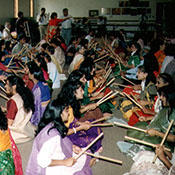Filter By
- Landscape (20)
- Afro-Caribbean (317)
- Other Indigenous Traditions (118)
- None/SBNR (28)
- Bahá'í (784)
- New Religious Movements (158)
- Other Traditions (750)
- Buddhism (3403)
- Christianity (8845)
- Confucianism (106)
- Daoism (144)
- Hinduism (3857)
- Humanism (647)
- Interfaith (9278)
- Islam (12716)
- Jainism (413)
- Judaism (4747)
- Multifaith (202)
- Native American Traditions (832)
- Uncategorized (86)
- Paganism (928)
- Shintō (125)
- Sikhism (3630)
- Unitarian Universalism (105)
- Zoroastrianism (231)
Copyright © 2024 The President and Fellows of Harvard College | Accessibility | Digital Accessibility | Report Copyright Infringement


